
TARGET 160323
"Atlantis of the East"
Shi Cheng, China's Sunken City
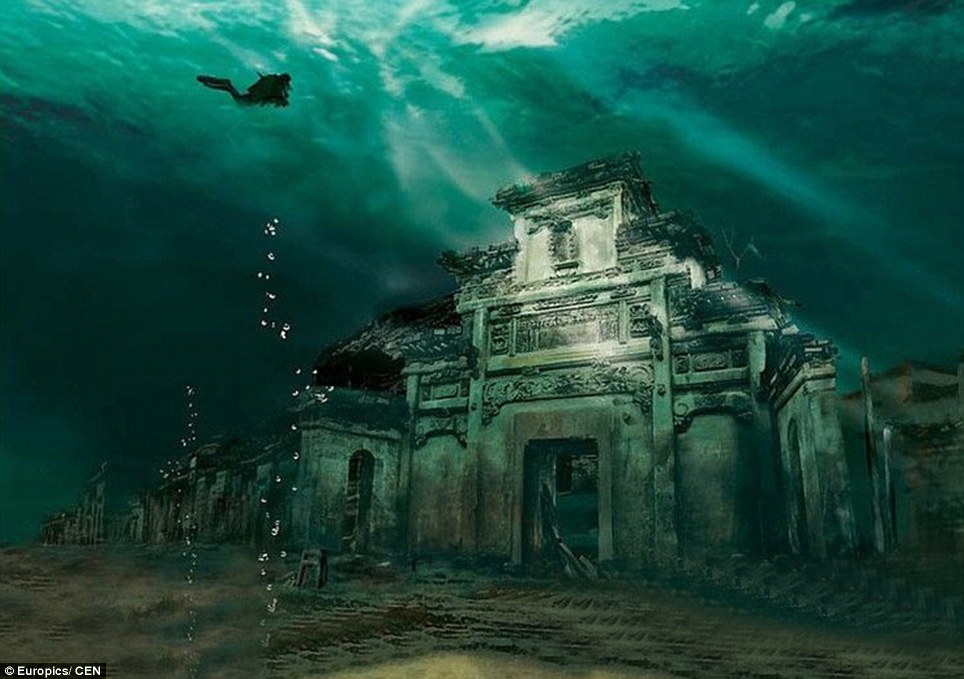
Between the years of 20AD to 200AD, a settlement in the Lion Valley of China grew into the city of Shi Cheng ("Lion City" in Chinese). It became a cultural, political, and trade center, and the seat of local power. For a short time in its early years, it and the land around it even became a separate country. It remained a major focal point for almost 2000 years, and in fact, some of its temples and buildings are close to being that old.
But it had one problem that it could not overcome. Shi Cheng was located in an idyllic valley that had a strong river running through it. Once the age of electric lights and appliances arrived, the nearby city of Shanghai, China was growing and growing, and needed more and more electricity for its homes, businesses, neon lights, and the daily lives of its people. Shanghai needed a hydroelectric dam to produce all that electricity, and the river running through the valley in which Shi Cheng was located was the ideal place for it.
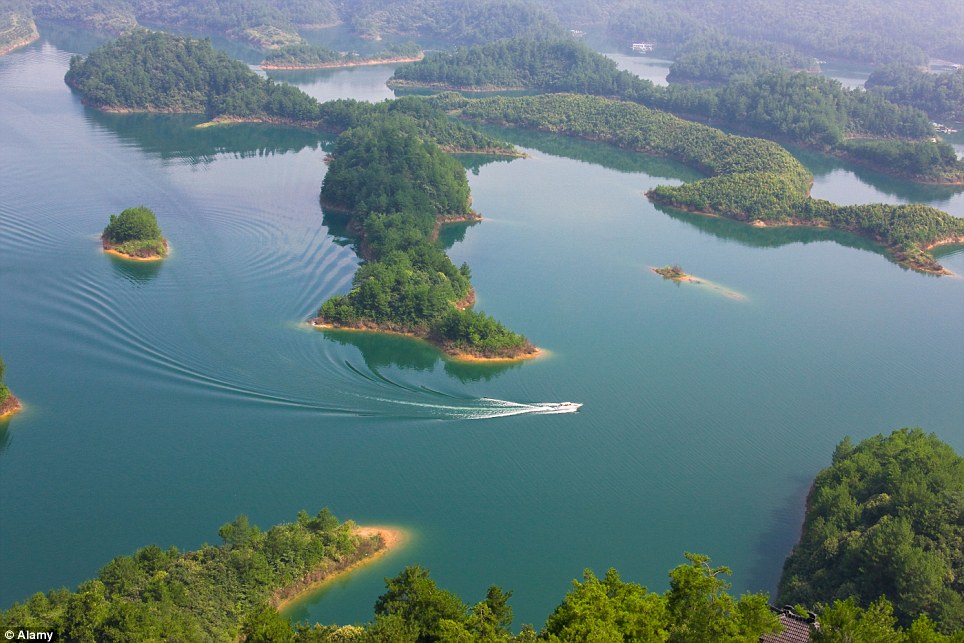
So, a dam was built. In preparation for the coming flood, thousands of people were relocated, some of whom had had family living in that city for almost 2000 years. In 1959, the dam was completed and the waters behind the dam began to rise. The historic metropolis that was once declared its own country and later became the most important city in that part of Eastern China became a home for fish.
After erecting the dam, now known as Xin'an River Hydroelectric, the historic metropolis and its once idyllic valley was slowly filled with water until it was completely submerged under 40 meters (130 feet) of water, now known as Qiandao (thousand island) Lake.
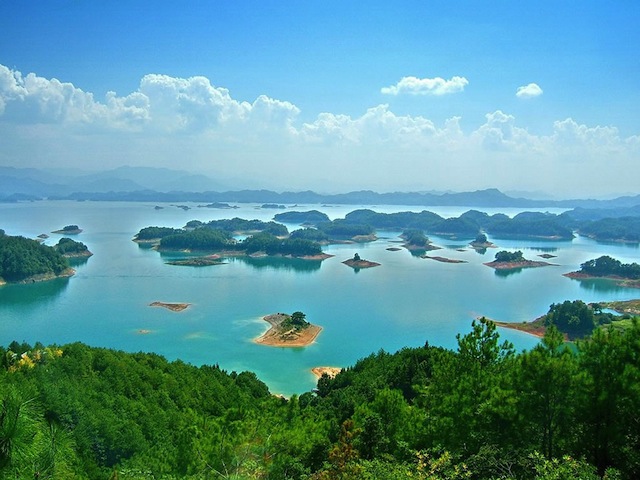
"The Lake of a thousand islands"
The lake that formed behind the dam covers an area of 573 km≤ (221 square miles) and has a storage capacity of 17.8 km≥ (4,702,262 gallons) of water. What used to be hilltops are now more than 1,000 large islands dotting the lake and a few thousand smaller ones are scattered across it.
But below the surface, the remnants of ancient China's historic past still stands, waiting to be seen and treasured.
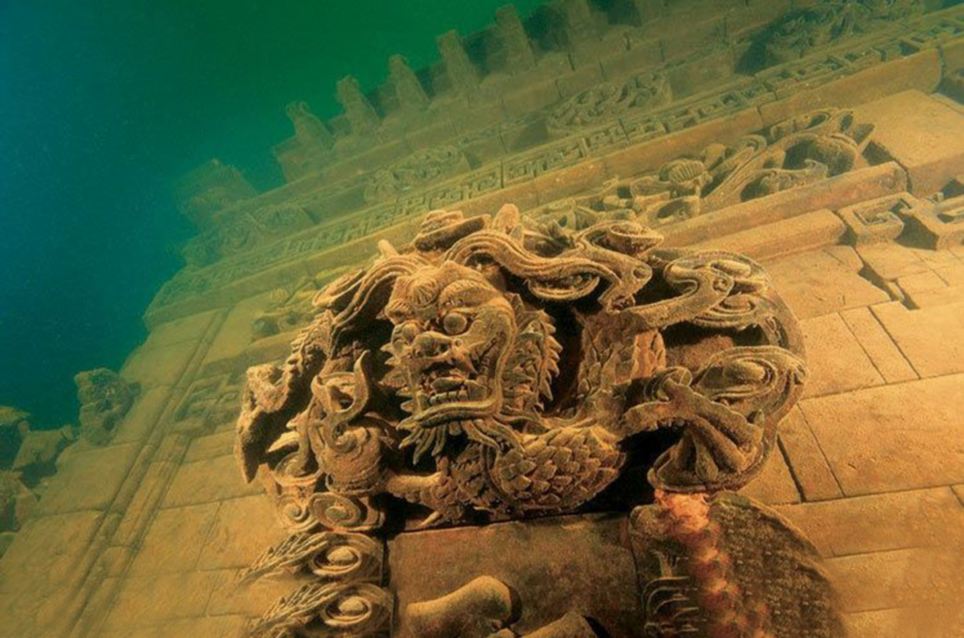
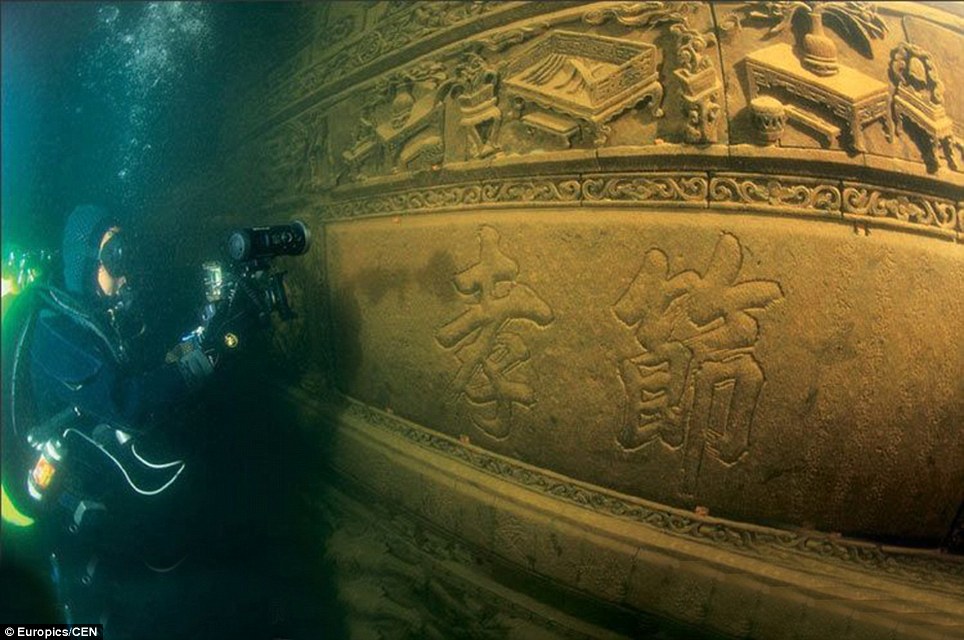
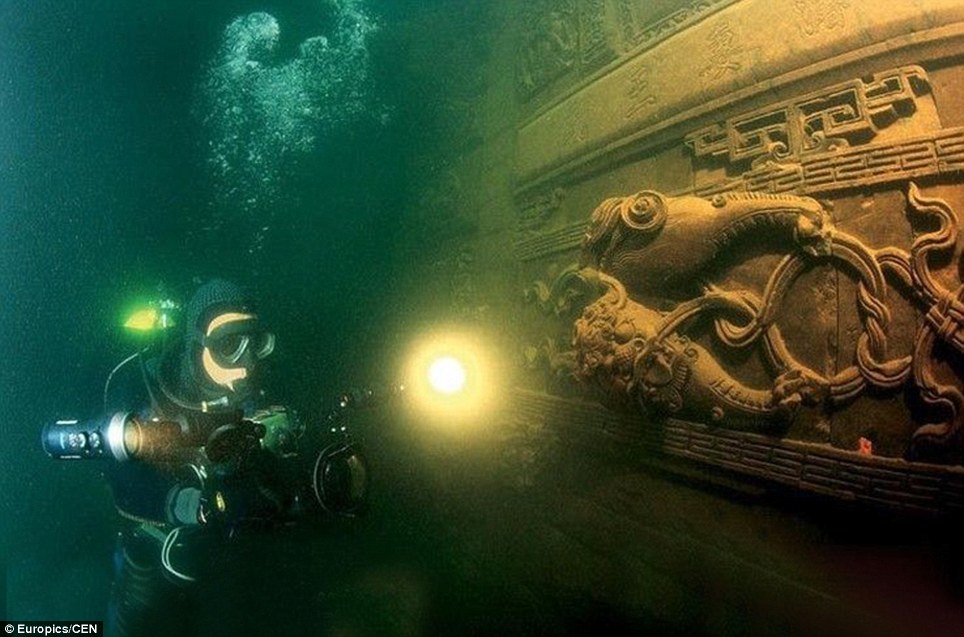
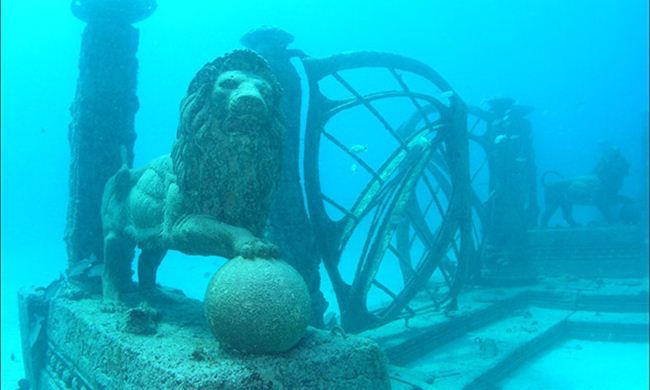
After it was flooded, the Lion City lay undisturbed and forgotten for 53 years, until 2012, when Qiu Feng, a local official in charge of tourism, decided to see what remained of the city. He was surprised to discover that the waters, instead of destroying the city, had actually preserved it. It is now covered with silt and brown lake algae, but the waters are fresh, not salty, and now the entire city - complete with temples, memorial arches, paved roads, and houses, still stands, as majestic as it was before being abandoned to make way for Shanghai's televisions, electric lights, and for the sports boaters and fishermen on the surface of the water above.
Qiu Feng reported his findings, and scuba divers began making excursions to the lake to see this underwater wonder. The site has now been opened up by the local tourist office and divers, who must gain permission to dive there, are vying to get a look at this ancient sunken city and all the historical treasures it has to offer.
FEEDBACK MAP

If you got impressions for which this feedback is insufficient, more information,
pictures and videos can be found at the following web sites:
Ancient Origins web site
The Daily Mail
BBC's travel page
YouTube (video by scuba diver)
Wikipedia (history of Qiandao Lake)
Many thanks to Lori Williams for this target.